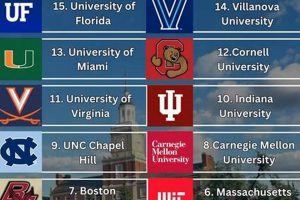High-quality farrier training programs offer comprehensive instruction in equine hoof care, including anatomy, physiology, shoeing techniques, and disease management. These programs often combine classroom learning with extensive hands-on experience, forging and shaping shoes, trimming hooves, and working directly with horses under the supervision of experienced professionals. Graduates emerge equipped to address a range of hoof-related issues, from routine maintenance to complex therapeutic interventions.
Skilled farriers play a crucial role in maintaining equine health and soundness. Proper hoof care is essential for preventing lameness and maximizing performance in horses of all disciplines. Selecting a reputable educational institution is vital for aspiring farriers seeking to develop the expertise and practical skills necessary for a successful career. The history of farriery dates back centuries, evolving from rudimentary hoof protection to the specialized science it is today. Modern farriers utilize advanced techniques and materials, requiring comprehensive training to meet the diverse needs of today’s equine athletes and companions.
This article will delve deeper into the world of farrier education, exploring key factors to consider when selecting a training program, highlighting notable institutions, and discussing the career prospects for graduates. It will provide a comprehensive overview of this vital profession and the education required to excel within it.
Tips for Selecting Reputable Farrier Training
Choosing the right farrier training program is a crucial step towards a successful career in equine hoof care. Careful consideration of several factors can significantly impact both the quality of education received and future career prospects.
Tip 1: Accreditation and Certification: Seek programs accredited by recognized farrier organizations. Accreditation ensures adherence to industry standards and enhances credibility within the profession.
Tip 2: Curriculum Breadth: A comprehensive curriculum should encompass equine anatomy and physiology, hoof care theory, practical shoeing techniques, forging, and business management.
Tip 3: Instructor Expertise: Experienced instructors with a strong background in farriery provide invaluable guidance and mentorship. Research the qualifications and experience of the teaching staff.
Tip 4: Facilities and Resources: Access to well-equipped facilities, including forges, anvils, and a variety of horses for practical experience, is essential for effective learning.
Tip 5: Hands-on Training: Ample opportunities for practical experience, working directly with horses under supervision, are paramount. Seek programs with a high ratio of practical to classroom learning.
Tip 6: Externship Opportunities: Externships or apprenticeships with established farriers provide valuable real-world experience and networking opportunities.
Tip 7: Career Support: Programs offering career guidance, job placement assistance, and continuing education opportunities can enhance career prospects after graduation.
By carefully considering these factors, aspiring farriers can select a training program that provides a solid foundation for a successful and rewarding career in equine hoof care.
This exploration of key selection criteria provides a framework for informed decision-making. The subsequent conclusion will summarize key takeaways and offer final guidance for aspiring farriers.
1. Accreditation
Accreditation plays a crucial role in defining high-quality farrier education. Reputable farrier schools seek accreditation from recognized organizations, demonstrating a commitment to meeting industry standards and providing students with a robust learning experience. Accreditation signifies that a program has undergone rigorous evaluation, ensuring its curriculum, facilities, and instructors meet established benchmarks. This process often involves external review by experienced farriers and educators, validating the program’s quality and relevance to the profession.
The benefits of attending an accredited farrier school are substantial. Graduates of accredited programs often gain a competitive edge in the job market, as their credentials are widely recognized and respected within the industry. Accreditation can also facilitate licensure or certification processes in some jurisdictions. For example, the American Farrier’s Association (AFA) offers a Certified Farrier (CF) designation, a respected credential within the field. While AFA accreditation is not a prerequisite for the CF exam, attending an AFA-approved school often aligns curriculum with the CF standards, better preparing candidates for the rigorous certification process. Furthermore, many apprenticeship opportunities prefer or require candidates to have graduated from an accredited institution.
In summary, accreditation serves as a critical marker of quality in farrier education. It provides prospective students with a reliable indicator of program excellence and offers graduates enhanced career prospects. By prioritizing accredited institutions, aspiring farriers invest in a robust education that meets industry standards and positions them for success in a competitive field. While accreditation is not the sole determinant of a successful career, it provides a strong foundation and enhances credibility within the farrier profession.
2. Experienced Instructors
The quality of instruction significantly impacts the effectiveness of farrier training. Experienced instructors, possessing both theoretical knowledge and extensive practical skills, are a hallmark of high-quality farrier schools. They provide essential guidance, mentorship, and real-world insights crucial for developing competent and successful farriers. The following facets highlight the importance of experienced instructors in farrier education.
- Real-World Expertise:
Instructors with significant practical experience bring a wealth of knowledge beyond textbook theory. They can share real-world examples, case studies, and troubleshooting techniques gleaned from years of working with horses. This practical wisdom is invaluable in preparing students for the diverse challenges encountered in farrier practice. For instance, an experienced instructor can demonstrate subtle adjustments in shoeing techniques to address specific conformational issues or performance needs, nuances often absent from textbook descriptions.
- Individualized Instruction:
Experienced instructors possess the ability to tailor their teaching methods to individual learning styles and skill levels. They can identify areas where students require additional support and provide personalized guidance to foster skill development. This individualized approach is particularly crucial in hands-on training, where subtle variations in technique can significantly impact outcomes. An experienced instructor can observe a student’s forging technique, for example, and offer specific adjustments to improve efficiency and precision.
- Mentorship and Professional Development:
Beyond technical skills, experienced instructors often serve as mentors, guiding students in their professional development. They can offer advice on building client relationships, establishing a business, and navigating the ethical considerations of farrier practice. This mentorship can be crucial in the early stages of a farrier’s career, providing support and guidance during the transition from student to professional. Established instructors often have extensive networks within the industry, potentially facilitating valuable connections and apprenticeship opportunities for their students.
- Commitment to Continuing Education:
The field of farriery is constantly evolving, with new research, techniques, and materials emerging regularly. Experienced instructors committed to continuing education ensure their knowledge remains current and relevant. They bring these advancements into the classroom and forge, exposing students to the latest developments in hoof care. For instance, an instructor actively engaged in continuing education can introduce students to innovative therapeutic shoeing techniques or advanced materials designed to enhance hoof health and performance.
The presence of experienced instructors is a key indicator of a high-quality farrier program. Their practical expertise, individualized instruction, mentorship, and commitment to continuing education contribute significantly to student success, fostering the development of competent and ethical farriers prepared to meet the diverse challenges of equine hoof care.
3. Comprehensive Curriculum
A comprehensive curriculum distinguishes high-quality farrier training programs. The breadth and depth of subject matter covered directly impact a graduate’s preparedness for the diverse demands of equine hoof care. Best farrier schools recognize the interconnectedness of theory and practice, incorporating both into a robust educational framework. This approach equips students with a foundational understanding of equine anatomy, physiology, and biomechanics, alongside practical skills in trimming, shoeing, forging, and managing hoof-related pathologies.
A well-rounded curriculum encompasses several core components. Equine anatomy and physiology provide the basis for understanding hoof structure, function, and common ailments. Biomechanics explores the forces acting upon the hoof and limb during movement, informing shoeing strategies to optimize performance and soundness. Practical instruction in trimming and shoeing techniques encompasses both traditional methods and contemporary approaches, utilizing a range of tools and materials. Forging skills allow farriers to create custom shoes tailored to individual horse needs, while instruction in hoof pathology and therapeutic shoeing prepares graduates to address lameness and other hoof-related issues. Business management skills are often integrated into the curriculum, equipping graduates to operate successful farrier practices. For example, understanding equine gait analysis enables a farrier to identify subtle lameness issues and tailor shoeing strategies accordingly, while proficiency in therapeutic shoeing allows for effective intervention in cases of laminitis or navicular syndrome. Integrating business management principles allows graduates to navigate client interactions, pricing strategies, and financial management effectively.
The practical significance of a comprehensive curriculum is evident in a graduate’s ability to address diverse equine needs. A thorough understanding of equine anatomy and biomechanics informs decisions regarding trimming and shoeing, maximizing hoof health and performance. Proficiency in forging and therapeutic techniques allows for customized solutions to address specific hoof conditions and individual horse requirements. The integration of business management principles enables graduates to establish and maintain thriving practices. Ultimately, a comprehensive curriculum contributes significantly to the development of well-rounded, competent farriers equipped to provide high-quality hoof care and contribute meaningfully to the equine industry.
4. Hands-on Training
Hands-on training forms the cornerstone of effective farrier education. Best farrier schools prioritize extensive practical experience, recognizing its essential role in developing competent and confident practitioners. The direct application of theoretical knowledge through hands-on learning bridges the gap between concept and practice, solidifying understanding and building essential skills. This immersive approach cultivates the nuanced touch, precise movements, and problem-solving abilities crucial for success in farrier work. For example, while classroom instruction can explain the principles of hoof balance, only through repeated trimming and shoeing of live horses can a student truly develop the “eye” for recognizing and achieving optimal hoof conformation. Similarly, forging techniques, while demonstrable in theory, require hands-on practice to master the precise manipulation of heat, metal, and tools necessary for creating custom shoes.
Practical experience provides numerous benefits beyond technical skill development. Working directly with horses allows students to develop essential horsemanship skills, including safe handling practices, understanding equine behavior, and recognizing subtle signs of discomfort or lameness. This direct interaction cultivates empathy and builds confidence, crucial for handling the diverse temperaments and physical conditions encountered in equine patients. Furthermore, hands-on training provides opportunities for immediate feedback from instructors, enabling students to refine techniques and address weaknesses in real-time. This iterative learning process accelerates skill development and fosters critical thinking. For instance, a student struggling with nail placement during shoeing can receive immediate corrective guidance from an experienced instructor, preventing the development of bad habits and ensuring proper technique is ingrained from the outset.
In summary, the emphasis on hands-on training distinguishes best farrier schools, recognizing its crucial role in developing well-rounded practitioners. The direct application of knowledge, development of essential horsemanship skills, and opportunity for immediate feedback collectively contribute to a more comprehensive and effective learning experience. This practical foundation prepares graduates for the complexities of equine hoof care, equipping them to address the diverse challenges encountered in professional practice with competence and confidence.
5. Career Support
Robust career support services distinguish best farrier schools, recognizing that educational excellence extends beyond technical training. These institutions understand that successful career transitions require more than just technical proficiency; they demand networking opportunities, business acumen, and ongoing professional development. Effective career support bridges the gap between graduation and professional practice, equipping graduates with the tools and resources necessary to thrive in the competitive farrier industry.
- Mentorship and Networking:
Best farrier schools often facilitate connections between students and established professionals, creating valuable mentorship and networking opportunities. These connections can lead to apprenticeships, job shadowing, and valuable insights into the practical aspects of running a successful farrier business. For example, a school might organize workshops led by experienced farriers, providing students direct access to industry leaders and potential mentors. Strong alumni networks can further expand these networking opportunities, connecting recent graduates with established professionals in their region.
- Business Development and Marketing:
Understanding business principles is crucial for independent farriers. Best farrier schools often incorporate business management training into their curricula, covering topics such as client communication, pricing strategies, marketing, and financial management. Some programs might offer workshops on creating business plans or utilizing digital marketing tools to reach potential clients. These skills empower graduates to establish and manage successful practices, ensuring financial stability and professional growth. For example, understanding how to effectively market services through online platforms can significantly expand a farrier’s client base.
- Job Placement Assistance:
Many reputable farrier schools provide job placement assistance, connecting graduates with potential employers or apprenticeship opportunities. These services can include resume writing workshops, interview preparation, and maintaining a database of job openings. Active engagement with farrier associations and industry partners further strengthens these placement efforts. For example, a school with strong ties to a national farrier organization might have access to exclusive job postings or apprenticeship opportunities not readily available to the public.
- Continuing Education Opportunities:
The field of farriery is constantly evolving. Best farrier schools encourage lifelong learning by providing access to continuing education resources. This might include workshops on advanced techniques, updates on new research, or opportunities to participate in specialized certifications. This commitment to ongoing professional development ensures graduates remain at the forefront of the industry, adapting to new advancements and providing clients with the best possible care. For example, a school might offer advanced workshops on therapeutic shoeing techniques or host conferences featuring leading experts in equine podiatry.
Comprehensive career support services enhance the value of a farrier education, transforming graduates into well-rounded professionals equipped not only with technical skills but also with the business acumen and industry connections necessary for long-term career success. By investing in these support systems, best farrier schools demonstrate a commitment to their students’ future, fostering a new generation of skilled and successful farriers prepared to contribute meaningfully to the equine industry.
Frequently Asked Questions about Farrier Schools
This section addresses common inquiries regarding farrier education, providing prospective students with essential information to navigate the selection process and embark on a fulfilling career path.
Question 1: What is the typical duration of a farrier training program?
Program lengths vary, ranging from short-term certification courses to comprehensive two-year programs. The duration often correlates with the depth and breadth of the curriculum.
Question 2: What qualifications are needed to enroll in a farrier school?
Admission requirements differ between institutions. Some programs may require a high school diploma or equivalent, while others may consider relevant experience or prerequisite coursework.
Question 3: What is the average cost of farrier training?
Tuition costs vary significantly based on program length, location, and institution type. Financial aid options may be available, including scholarships and loans.
Question 4: Is certification or licensing required to practice as a farrier?
Certification and licensing requirements vary by jurisdiction. While not always mandatory, professional certification, such as the American Farrier’s Association (AFA) certification, enhances credibility and career prospects.
Question 5: What are the career prospects for farrier school graduates?
Graduates can pursue various career paths, including self-employment, working for established farrier businesses, specializing in therapeutic shoeing, or pursuing further education in equine podiatry.
Question 6: How can one research and compare different farrier schools?
Prospective students are encouraged to thoroughly research programs, considering factors like accreditation, curriculum, instructor experience, facilities, and career support services. Contacting individual schools and speaking with current students or alumni can provide valuable insights.
Thorough research and careful consideration of individual circumstances are crucial for selecting the optimal farrier training program to achieve career goals.
This FAQ section provides a starting point for further exploration. Consulting with farrier schools directly and engaging with industry professionals offer additional personalized guidance.
Conclusion
Selecting a top-tier farrier training program is a pivotal decision for aspiring hoof-care professionals. This exploration has highlighted the multifaceted nature of quality farrier education, emphasizing the significance of accreditation, experienced instructors, a comprehensive curriculum, ample hands-on training, and robust career support services. These elements collectively contribute to a well-rounded educational experience, preparing graduates for the diverse challenges and rewards of a career dedicated to equine hoof health.
The future of equine welfare rests, in part, upon the skilled hands of well-trained farriers. Diligent research and informed decision-making when selecting a farrier school represent an investment not only in a personal career but also in the continued well-being of horses. The commitment to excellence in farrier education ensures a future generation of skilled professionals dedicated to maintaining equine soundness and promoting optimal performance.







